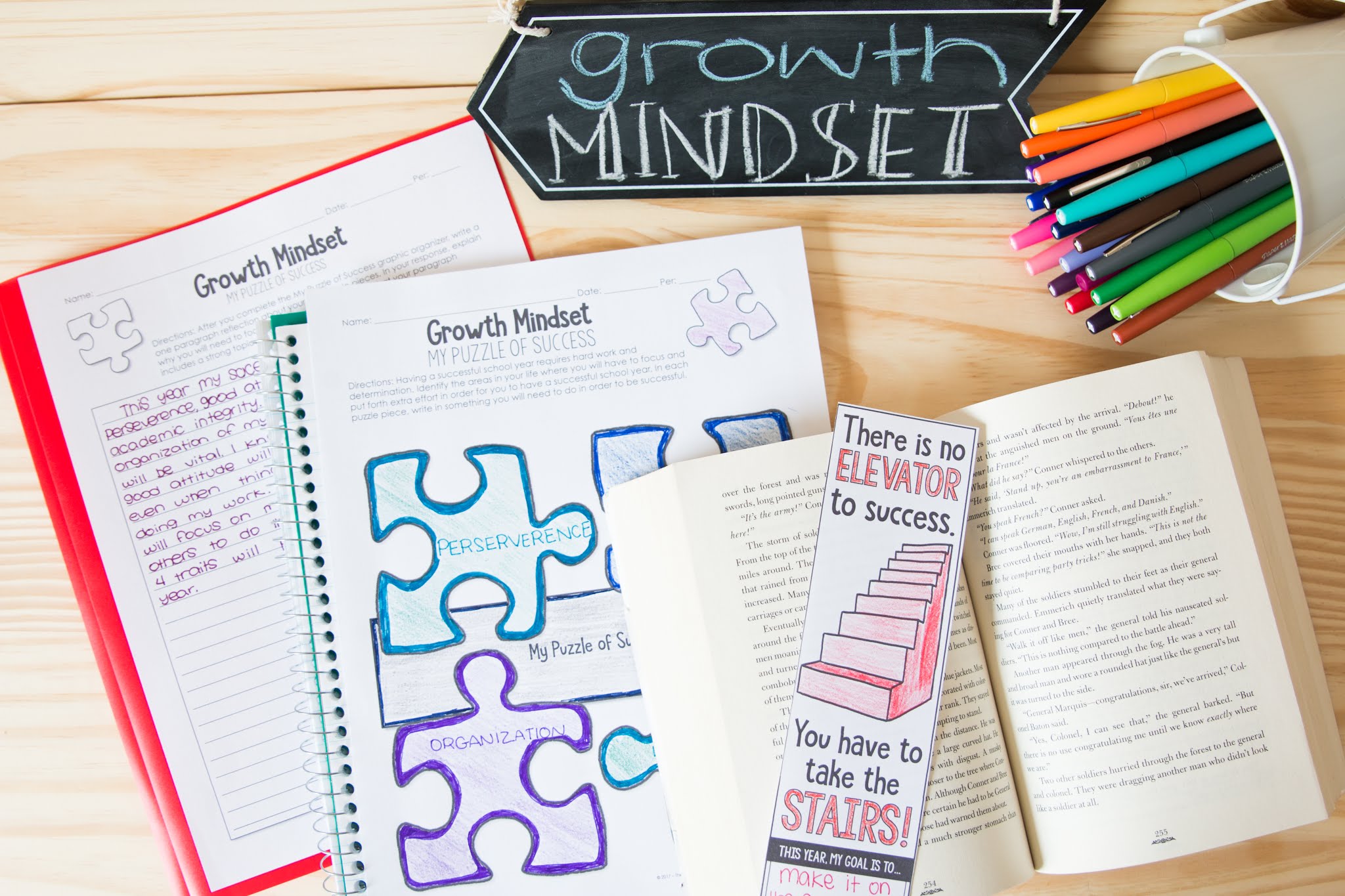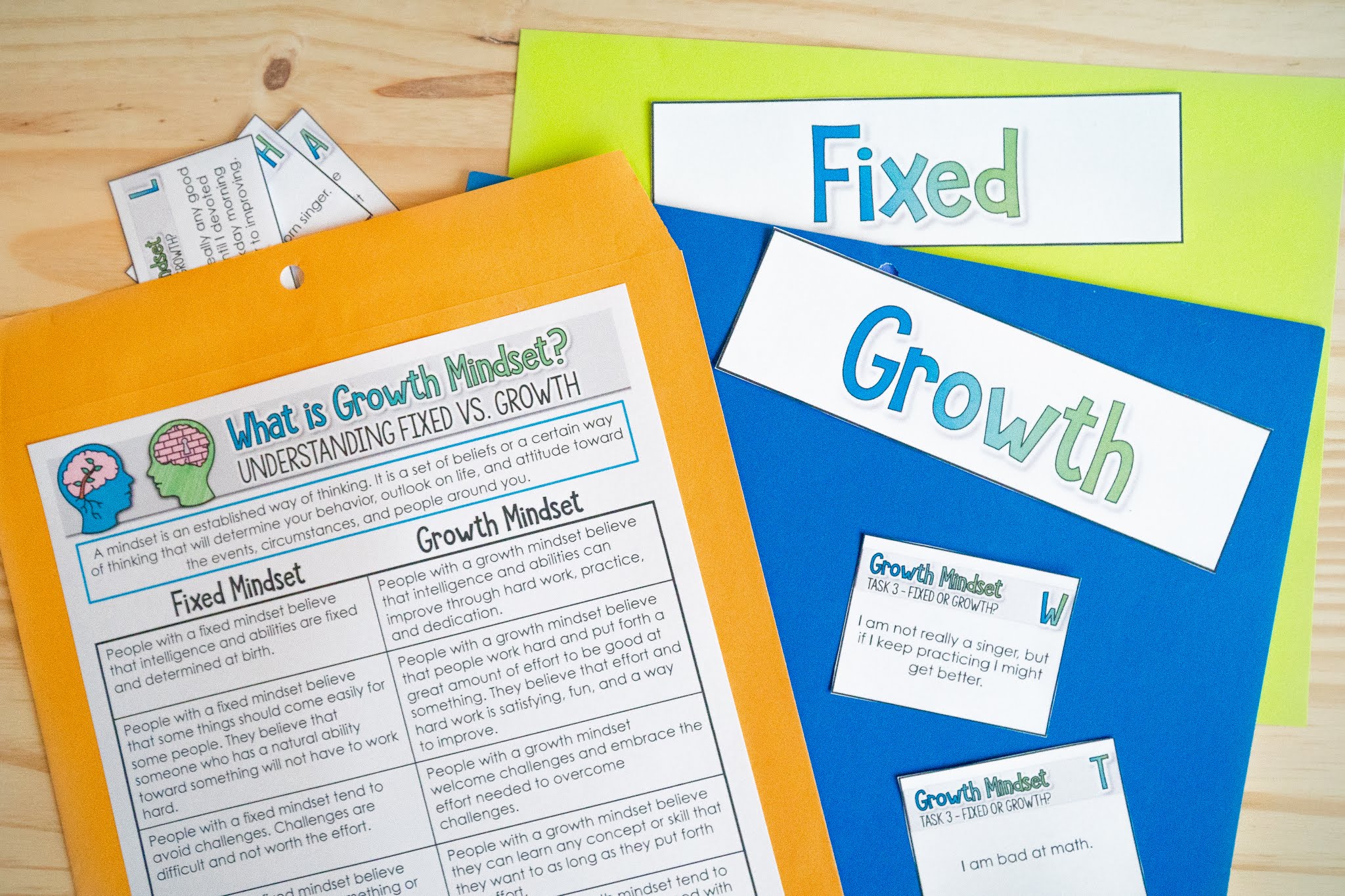Many schools across the nation are adopting a growth mindset approach to education. Schools and classrooms that embrace a growth mindset see the value in learning as a process and strive to help students put forth their best effort.
So, what exactly is a growth mindset? According to Carol S. Dweck, a psychology professor at Stanford University, there are two kinds of mindsets: fixed and growth. People with a fixed tend to see themselves with fixed intelligence and capabilities, whereas people with a growth mindset believe that they can increase their intelligence and improve their capabilities through effort and determination.
In the classroom and beyond, real learning occurs when students put forth the effort to break through barriers, accomplish difficult tasks, and learn from mistakes.
To help facilitate a growth mindset in your classroom, I’ve created a Growth Mindset resource, especially for secondary teachers.
As a teacher, there are five simple steps you can take to create a growth mindset approach in your classroom.
1. Model Growth Mindset
I am a firm believer in leading by example. Students watch every single move we make in the classroom, and they take note. If their teachers accept mistakes and learn from them, if their teachers embrace challenges, if their teachers put forth the effort to make class great, chances are that students will do the same. Be open and honest with your students. If a student asks you a question that you don’t know, turn it into a learning opportunity for everyone and look up the answer right then and there. You and your students will learn something new.
2. Focus on Small Goals
Regularly talk about and set small goals with your students. Setting and achieving small goals in class will help boost your students’ self-confidence and make them see that they can learn and grow with effort and determination. Be a part of this process as well. Set your own goals with your students. Doing so will model this behavior for them.
I also like to have my students set small goals at the beginning of the school year. This Back-to-School Growth Mindset Activities resource is a great tool to get students started on the right foot!
3. Praise Effort, Not Outcome
As a parent and a teacher, I cannot emphasize this enough. Only praising student outcome will typically lead to only the brightest and most talented students receiving praise. This is harmful to the average and marginal students because it can validate fixed mindset thoughts they might already have. Instead, praise effort. Your struggling student might not write the best essay, but if you see that student really making an effort, that effort should be praised. Students thrive with positive feedback, and they will continue to put forth their best effort if they feel that teachers notice it.
4. Set High Standards
Part of establishing a growth mindset in your classroom is to set and maintain high, yet not unrealistic, standards in your classroom. Hold students accountable for achieving those high standards, and praise their effort when you see them trying. Setting high standards in your classroom might take some extra work. You might have to directly teach a concept a bit more or model more of what you expect from your students, but the students will quickly adapt.
5. Learning is a Process
One last, key step to creating a growth mindset in your classroom is to emphasize (to yourself and your students) that learning is a process. The final test, the final assignment, the final task, the final essay should not be the final result. Instead, it is more about the journey to that final task and everything the students did and everything they learned in the process.
My students love completing this Growth Mindset Escape Room challenge! It’s a great activity for the beginning of the year, and it is also a great activity for a mid-year kickstart!
Establishing a growth mindset in your classroom can help your students tremendously. After focusing on fostering a growth mindset in my own classroom, I’ve seen a lot of improvement with my struggling students who sometimes get overlooked.
To create a growth mindset in my own classroom, I’ve done a few things. First, I start each week with a growth mindset bellringer. These bellringers are a great way to begin the week on a positive note. Each bell ringer includes an inspirational quote about success, hard work, failure, or determination and a brief writing prompt. Check out my Growth Mindset Bell Ringers HERE.
In addition to my Growth Mindset Bell Ringers, I also like to incorporate various growth mindset activities and resources into my secondary English classroom. First, I like to have students take a growth mindset quiz. This quiz allows students to assess themselves to determine where their mindset it. This allows students to be more open to changing their mindset. Then, I incorporate resources such as growth mindset oriented exit slips and assignment reflections into my weekly and daily routines. Finally, I integrate growth mindset activities into my curriculum. I include vocabulary that focuses on growth mindset, group activities that require students to analyze various types of thinking, and writing prompts that help students embrace learning as a process.
All of these resources are available in my Growth Mindset Activities and Resources for the Secondary Classroom activity resource.







One Comment
do you have these resources on tpt